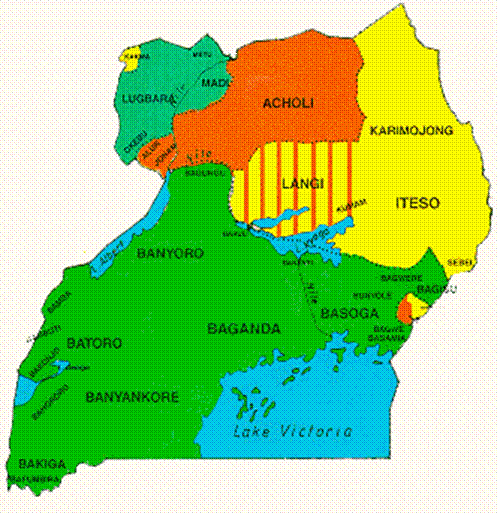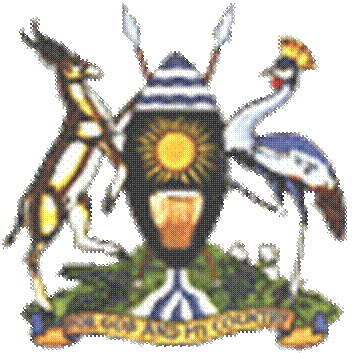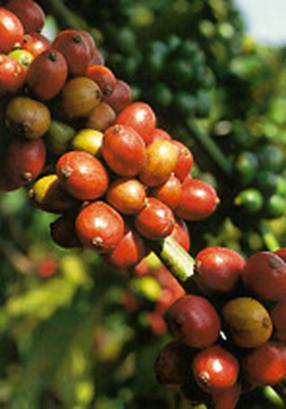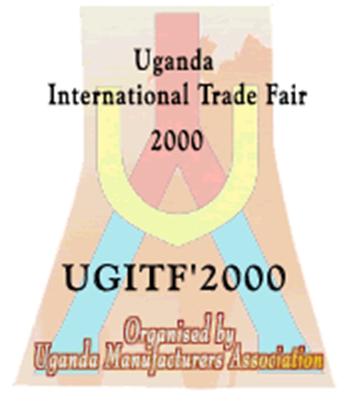Uganda: The Pearl of Africa

Ryan Nicosia
(gatorry@ufl.edu)
Contents
 Introduction
Introduction
 Country Profile
Country Profile
 Information
Presentation
Information
Presentation
 Conclusion
Conclusion
 Suggestions/Recommendations
Suggestions/Recommendations
 Bibliography
Bibliography
Introduction
Country
Uganda is a landlocked country
located in Eastern
Africa
with a population of about 25.6 million. It is bordered by Sudan to the North, Democratic Republic of
the Congo to the west, Rwanda and Tanzania to the South, and Kenya to the East. Like the
continent of Africa itself, much of Uganda can be classified as a
plateau sloping south to north. The
country has many small hills and valleys along with extensive savannah plains.
The country has several mountain ranges on its East border with Kenya. These ranges are Mount Elgon, Mount Moroto, and the Rwenzori ranges. Uganda is made up of about 17%
water including open swamp areas near Lake Victoria. Uganda has extremely diverse
vegetation as a result of the different micro-climates of the country.
Vegetation zones can be roughly classified according to the rainfall zones and
are generally; Lake Region, Northern Region, and the Highlands of the South-East. These
are defined according to the climate of the particular areas. There is a legend
documented by John Hanning Speke
of how Uganda got its name. Uganda was the name of a
prodigious hunter who came from Unyoro. He was a poor
man who hunted to feed his family and was so successful, that he was soon
feeding people all around. He was eventually named Kimera,
the first King of Buganda. (http://www.myuganda.co.ug)

(http://www.myuganda.co.ug)
Trade and Aid
The main interests
of the United States in Uganda are supporting its
continued integration into a global economy and enhancing its role in regional
stability. Uganda's economy grew at an
average rate of 6% during the 1990s. This growth is a result of the country's
efforts to encourage sustainable economic development, attract foreign
investments, and promote export and trade. The country has excellent potential
to become a food exporter, particularly to neighboring African countries. Uganda contains unique ecosystems
important to biological diversity, many of which are of great interest to
international tourism. Uganda's efforts to reduce the
spread of AIDS are showing that the rate of new infections has markedly declined,
particularly among young adults. Primary education reform is one of Uganda’s top priorities,
increasing school enrollment and retention among girls. Some of Uganda’s policies also include
dissecting the responsibility for most government functions to 45 newly created
district administrations, providing local communities direct access to local
government.

(http://www.myuganda.co.ug)
Country Profile
Climate
Uganda is classified as a 'Modified Tropical' climate. Its
central location on the East African Plateau is a major determining factor in
the local climate. In reality Uganda has three sub-climatic zones differentiated mainly by
altitude and rainfall. (Aryeetey-Attoh 2003)
People
Uganda consists of a union of many different people each
with their own traditional lands, their own customs, and their own way of life
that has been inherited from ancestors.
Heritage lives in the hearts of the people through their traditional
dress, languages, dances, and customs. Today, these culturally different people
live as one and are all proud to be Ugandans. Uganda has four main ethnic groups each with its own origin.
The different tribes got their names either from their leaders or some
peculiarity in their customs or origins.
The Bantus, who came from the west, include the tribes
of Buganda, Banyankole, Basoga, Bakiga, Batoro, Banyoro, Banyarwanda, Bagisu, Bagwere and Bakonjo.
The Nilotics, who came from
the north, include the Lango, Acholi,
Alur, Padhola, Lulya and Jonam.
The NiloHamitics include the
Teso, Karamojong, Kumam, Kakwa, Sebei,
Pokot, Labwor, and Tepeth.
Religious tolerance is an important part of
present-day Uganda. Christians, Muslims, Jews, Hindus, and others all live
in harmony with the freedom to practice their own religion.


(http://www.myuganda.co.ug) (http://www.myuganda.co.ug)
Government
The Republic of Uganda
is governed on the principles of the concept of Movement System. This system is
all embracing and all inclusive. The countries motto is "Of the People, For the People and By the People". The
three branches or government are The Executive, The Legislature and The
Judiciary.
For the last 15 years, Uganda has pursued economic policy reforms that have imposed
fiscal discipline, restructuring public expenditure and liberalization of the
economy. These reforms come after massive setbacks that saw economic and social
indicators in shambles prior to 1986. Because of the prudent macro economic
policies, Uganda has recorded an impressive economic performance over
the last decade with average real rate of annual growth in GDP recorded at 6.9
percent. Inflation has fallen from 16.1 percent in past sixteen years to an
average of about 5.2 percent. Uganda’s economic performance has earned it praise from
International lenders like International Monetary Fund (IMF) and World Bank.
Despite Uganda’s record performance, it is still one of the world’s
poorest countries. This is despite the fact that poverty fell from 44 percent
to 39 percent according to Uganda Bureau of Statistics (UBOS) report for 2001.
(http://www.cia.gov/cia/publications/factbook/geos/ug.html)

(http://www.myuganda.co.ug)
Economy
The economy of Uganda is heavily dependent on agriculture. Agriculture
accounts for 44% of the countries GDP and employees over 80% of the labor
force. Over half of Uganda’s economic earnings are derived from coffee
exports. The government controls on the coffee and cotton industry have
been loosened to allow farmers a larger market in which to sell their
produce. Uganda’s main trade partners are Kenya, Britain, and France. (Elwana 2002)
Uganda's economy has been
rejuvenated by both direct and indirect investment. Because the country's
economy is still young, the potential and the choice of investment
opportunities is much wider for the prospective
investor than would be the case in more developed economies. Uganda's existing comparative
advantage is heavily concentrated in agriculture, forestry and mineral
resources and their primary processing. The government has facilitated foreign
investment with attractive incentives and streamlined import and export
procedures. Many expelled Asians have returned to reclaim their properties and are
reinvesting in a growing economy. (http://www.myuganda.co.ug)
Uganda's manufacturing industry
has undergone bad times due to the Amin regime. For
more than 20 years, Uganda’s factories suffered
decay, poor management, and neglect. After 1986, the government embarked on
rehabilitating the factories and inviting the owners to come back to reposes their properties. The government has continued to
encourage and actively participate in the recovery of the manufacturing
industry. Today, factories have regained their production capacity. In order to
facilitate the private sector, the Uganda Manufacturers Association was
revived. The Association has managed to bring together over 200 manufactures in
a discussion association. The Association in conjunction with the Uganda
National Chamber of Commerce organizes an annual Manufactures Trade Fair in Kampala. (http://www.myuganda.co.ug)



GDP per capita of United States, Uganda and Uganda’s bordering countries:
|
Rank
|
Country
|
GDP - per capita
|
Date of Information
|
|
2
|
United States
|
$ 44,000
|
2002 est.
|
|
189
|
Senegal
|
$ 1,500
|
2002 est.
|
|
196
|
Uganda
|
$ 1,260
|
2002 est.
|
|
198
|
Rwanda
|
$ 1,200
|
2002 est.
|
|
205
|
Kenya
|
$ 1,020
|
2002 est.
|
|
224
|
Tanzania
|
$ 630
|
2002 est.
|
|
225
|
Congo, Democratic Republic of the
|
$ 610
|
2002 est.
|
http://www.worldfactsandfigures.com/gdp_country_desc.php
Information Presentation
Uganda has made tremendous progress in social and economic
development since aid from the U.S. was revived in the early 80’s, changing from recovery
and reconstruction toward sustainable growth and reduction of poverty. By
placing development solutions in the areas of economic growth, health,
education and the environment, U.S. aid programs fully support the U.S. national interests in the country and East Africa region.
Rebels in northern
and western Uganda continue to displace large
numbers of people. Refugees from neighboring countries have come to Uganda due to regional conflicts.
Uganda is a key player in
conflicts in the Great Lakes and Horn of Africa regions, and its decisions
affect U.S. policies toward Sudan, the Democratic Republic of
the Congo, Rwanda and Burundi. Uganda's support for cease fire
and its participation in the peace process for Sudan, will eventually lead to a
settlement of these regional disputes.
Uganda remains one of the poorest
countries in the world. However, with U.S. aid assistance,
intensified efforts to strengthen its supervision and monitoring with reforms
to the privatization process will make more transparent and accountable the
Bank of Uganda.
U.S. aid programs aim to
increase the incomes of Ugandans by encouraging broad economic growth. This is
hoped to be achieved through conserving biodiversity and the natural resource
base, strengthening primary education and child health services, and enhancing
government accountability and transparency through the strengthening of
district governments. (Onyango-Obbo 2002) U.S. efforts have led to
increases in rural incomes through higher production of food crops and through
the introduction of agricultural exports such as cut flowers, fruits,
vegetables and spices. They also improved food security in Uganda. The United States initiated support for
efforts to make a partnership with the government to further liberalize trade
policy. And the number of finance providers has increased well beyond
anticipated levels. US aid has helped improve Uganda's system of 22 parks and
reserves containing biologically diverse areas, including the highly endangered
mountain gorilla.
The U.S. policy in the education
sector has served to open the school textbook market to competition, improve
teachers' contracts, and construct hundreds of classrooms. It has also provided
management training to thousands of teachers. In 1999, the U.S. initiated a
decentralization activity to strengthen local governments to manage financial
resources and enhance the capacity of civil society organizations to demand
accountability from their local government officials. U.S. aid humanitarian
assistance continues to provide emergency relief to 350,000 Ugandan internally
displaced persons and other affected groups. (www.usaid.gov)

(http://www.myuganda.co.ug)
United States Trade in Uganda
The United States has had no significant
trading interests in Uganda, nevertheless, a number of United States firms did do some
profitable business with Uganda, particularly during the Amin period. The United States government has mostly
maintained a low profile, avoiding involvement in domestic Ugandan political
issues. Although administering a relatively small economic assistance program,
they sought Uganda's support on several
issues before the UN. After Uganda's break with Britain in 1973, the United States became Uganda's chief trading partner
for a short time, but relations were nonetheless becoming smaller. The United
States Embassy was closed that November, while United States firms supplied the
government with security equipment used by the army and the notorious Ugandan
intelligence service. In October 1978, the United States Congress ended all
trade with Uganda. However, Amin was soon overthrown, and the United States Embassy
reopened and provided emergency relief, particularly food, medical supplies,
and small farm implements.
The guerrilla
struggle soon created new strains between the United States and Uganda, however, as the United
States Embassy forthrightly reported to its Congress the pattern of human
rights violations by government and army officials. This issue testified that
between 100,000 and 200,000 Ugandans had been killed. The Ugandan government
denied the accusation and withdrew its military officers who had been training
in the United States. When the NRM came to
power, friendly relations were quickly restored. The United States aid program was reoriented
to focus on immediate rehabilitation priorities identified by the Ugandan
government, particularly the war-damaged areas and in the matter of the
resettlement of refugees returning from Sudan and Zaire. (www.usaid.gov)
Conclusion
The information we have found
has led us to believe that Uganda is a wonderful and resourceful country that simply
needs a helping hand. By the United States giving them this hand we are enabling them to create
a hopeful future by improving health care, enhancing education, reducing
poverty, and setting a democratic example. Uganda is one stop on the train to building a strong and
prosperous Africa.
Suggestions/Recommendations
Our group has suggested that
the United
States
continue their efforts of aiding economically, medically, and educationally as
well as establishing relations to increase business. Our world is now largely
based on a global economy, and Uganda and the rest of Africa
need to jump on the wagon. We feel that as long as we continually improve our
efforts, Uganda will continually improve their standing in the
business world and on the whole.
Bibliography
o
Book Aryeetey-Attoh, Samuel
2003 Geography of Sub-Saharan Africa Prentice-Hall (Pearson Education)
o
Magazine Elwana, Dan Jun 29, 2002 Uganda Expands Trade with its Key Partners Business Week
o
Journal Onyango-Obbo, Charles Aug 14, 2002 Uganda Needs A Rich Mix Of Educated And Illiterate
Rulers The Monitor
o
Website www.usaid.gov
o
Website http://www.myuganda.co.ug
o
Website http://www.cia.gov/cia/publications/factbook/geos/ug.html
o
Website http://www.worldfactsandfigures.com/gdp_country_desc.php
Links
http://reference.allrefer.com/country-guide-study/uganda/uganda130.html
http://us-mission.ch/press2001/1208tpruganda.htm
http://news.bbc.co.uk/2/hi/africa/3077810.stm
http://www.freerepublic.com/focus/f-news/browse
http://allafrica.com/
http://www.africaonline.com/site/
http://www.africaguide.com/
http://www.africaaction.org/index.php
![]() Introduction
Introduction![]() Country Profile
Country Profile![]() Information
Presentation
Information
Presentation![]() Conclusion
Conclusion![]() Suggestions/Recommendations
Suggestions/Recommendations![]() Bibliography
Bibliography








